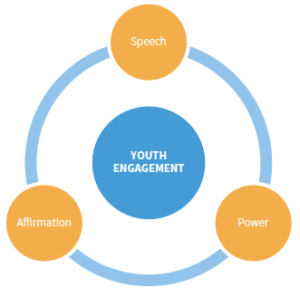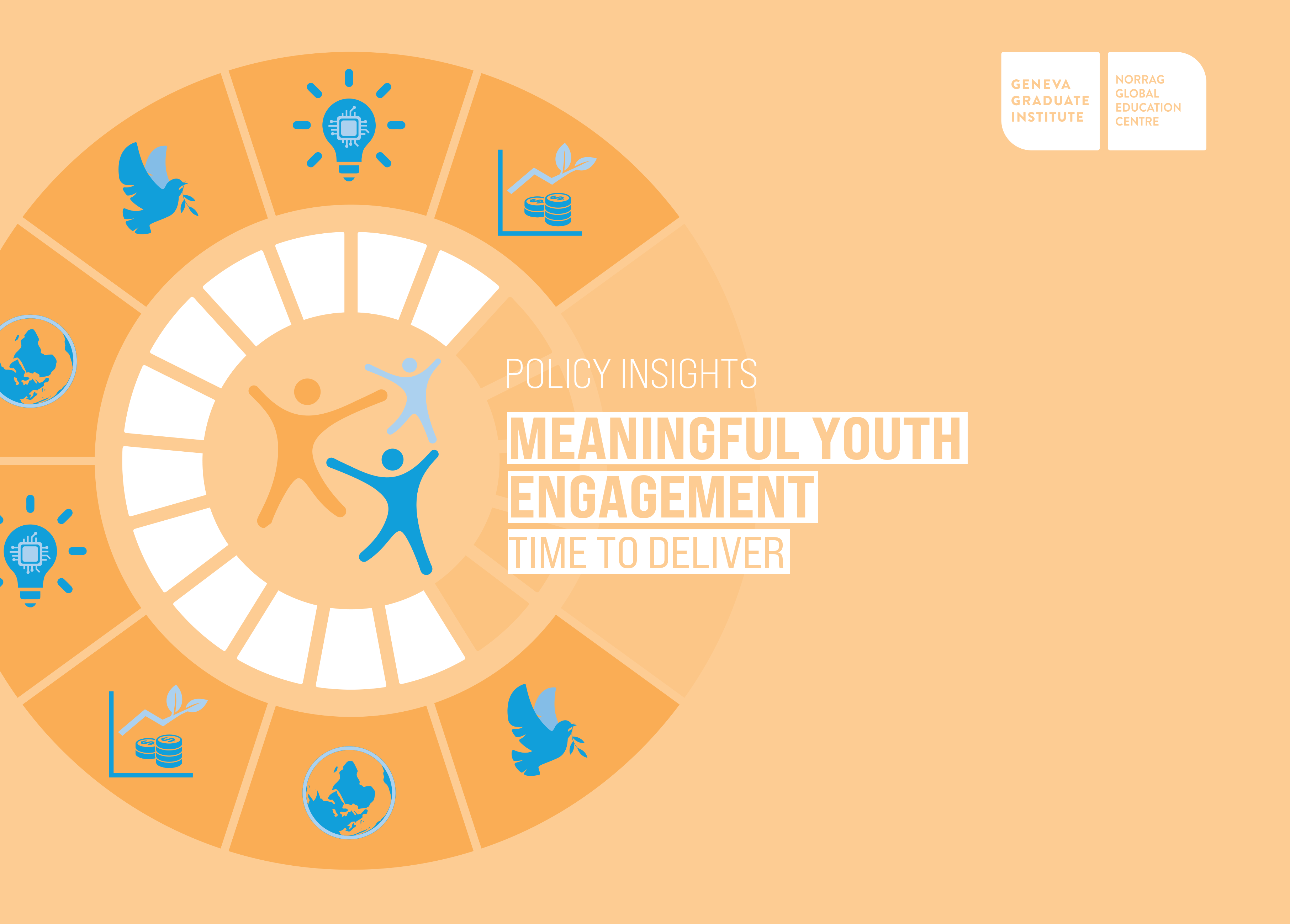Speech, Power, and Affirmation Strategies for Youth Engagement
In this blog post, Jhonatan Almada argues that youth engagement needs to go beyond manipulation, symbolism, and decoration. He proposes speech, power, and affirmation as effective strategies for youth engagement. This blog post was previously published in NORRAG’s Policy Insights #5, Meaningful Youth Engagement: Time to Deliver, which was launched on the occasion of the Summit of the Future.
Thinking about the engagement of young people in governance processes involves two fundamental moves. The first is reflecting on whether our practices correspond to effective processes of democratic participation. The second is implementing participation strategies that enable young people to speak out, exercise responsibility, and affirm their life stories. These strategies were developed in my work as an educational leader in Maranhâo, the most unequal and poorest of Brazil’s states.
Practices that do not achieve the meaningful engagement of young people in governance can be summarized as manipulation, symbolism, and decoration (Palhano, 2019). Manipulation corresponds to the insertion of young people in a planned way so that they act according to a predetermined plan and follow a script produced by adults. Symbolism is when young people are invited to take part in governance and have the right to speak according to protocol, but their ideas are not considered when decisions are made. Decoration is when young people are invited into governance spaces but do not have the right to speak—in other words, they function as decorative elements.
The governance bodies of the United Nations and national and local governments must examine their current youth engagement practices and identify whether they correspond to or differ from what I have listed as undesirable engagement practices: manipulation, symbolism, and decoration. In governance processes seeking to meaningfully engage youth, the free exercise of expression and thought cannot be restricted. Poorly designed planning and protocols can restrict participation; therefore, alternative processes are needed if what youth say, write, and deliberate is to be effectively used and considered in decision-making. Considering that the work of planning and evaluation requires the definition of criteria for indicators, I propose three practices as references for reflection and for improving the quality of youth engagement.
In Maranhâo, I led the development of three distinct youth engagement strategies. Each strategy can be synthesized by one of the three keywords: speech, power, and affirmation. Each one corresponds to a practice for ensuring young people meaningfully exercise their right to participate in governance.
Effective Strategies for Ensuring Young People Meaningfully Exercise Their Right to Participate in Governance. 
The strategy of speech creates opportunities for young people to exercise their right to speak. First, the responsible authorities engaged in governance processes should make themselves accessible to questioning by young people, in a free and non-directive way, regarding the issues young people spontaneously want to discuss (Freire, 1987). Second, the responsible authorities should listen to what young people have to say on a specific topic, such as the futures of education recently proposed by the United Nations Educational, Scientific and Cultural Organization (UNESCO, 2021) and other important documents. Consulting young people is crucial for addressing global, national, and local issues and should expand beyond youth-specific topics to effectively harness their valuable perspectives and contributions.
The power strategy involves giving young people the opportunity to exercise public decision-making functions. It implies that the responsible authorities must transfer their position of power to young people for a certain period, creating a space for learning and political education. This can be exemplified by the International Day of the Girl, when girls take on public functions and responsibilities for a day. We can think of this as a type of simulation of how political representation functions in collegiate bodies.
The affirmation strategy involves enabling young people to express their ideas and identities in different formats and media, such as through competitions, books, videos, photos, audio, drawings, and texts. Telling their own stories is a way of responding to and overcoming the crisis of narration that we are going through. Symptomatic of this crisis is the global growth in the number of young people who neither study nor work—that is, they are not afforded adequate opportunities and often cannot see themselves represented in the worlds of education and work. The deployment of a positive “affirmation” strategy can be exemplified by the action of the United Nations Office in Brazil, which held a competition on the 70th anniversary of the Universal Declaration of Human Rights (UDHR). Students were encouraged to present their views on the UDHR through texts and drawings.
Young people as subjects of rights need to have multiple and diverse opportunities for speech, power, and affirmation, whether at local, national, or international levels. These concrete strategies for action avoid the undesirable practices of manipulation, symbolism, and decoration and promote desirable practices of effective and meaningful youth involvement in decision-making.
The Author:
Jhonatan Almada is the Director of the Innovation Center for Excellence in Public Policy, São Luís, Brasil.


Thanks Jhonatan. I thinks this should be widely disseminated. Recently, a renown psychologist declared a youth who expressed the desire to speak out to be having a mental problem!! We realized it was more of culture than medicine at work. Where the psychologist lives, the youth or young do not publicly speak out or share their thoughts.